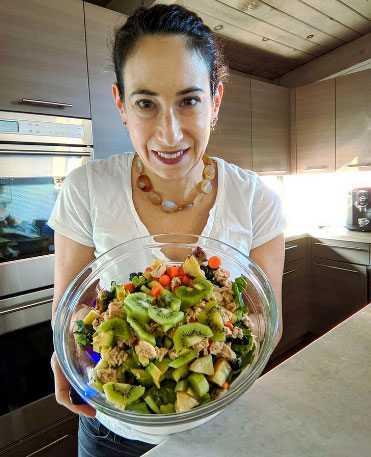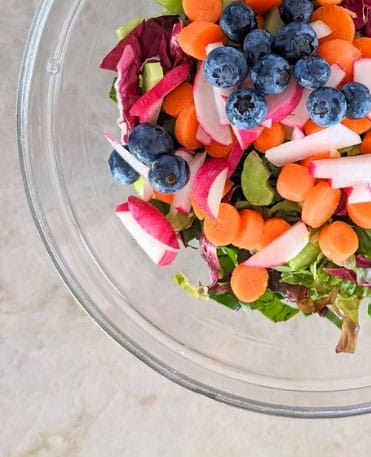 Curious if anti-inflammatory diets can help you? They are so popular right now. Plus, they seem to be the magic cure for many different conditions. The truth is, they do work, and they work for not just autoimmune diseases. Below are a few of the other medical issues this diet can help. Plus, I’ll give you a few tips at the end to help get you started on an anti-inflammatory eating pattern.
Curious if anti-inflammatory diets can help you? They are so popular right now. Plus, they seem to be the magic cure for many different conditions. The truth is, they do work, and they work for not just autoimmune diseases. Below are a few of the other medical issues this diet can help. Plus, I’ll give you a few tips at the end to help get you started on an anti-inflammatory eating pattern.
What are Anti-Inflammatory Diets?
Anti-inflammatory diets are designed to fight or lower chronic inflammation in the body. While inflammation is a healthy and normal response, it should be a short-lived process. In some instances, inflammation goes unresolved. This happens when the body is either overwhelmed with inflammatory cytokines or has continual exposure to inflammatory triggers. When inflammation stays for too long in the body, it becomes chronic inflammation.
Chronic inflammation is the underlying cause of many diseases and conditions. This is why many people have turned to anti-inflammatory eating patterns. Along with medication, food can be incredibly healing for a lot of these medical issues.
What Conditions does it Benefit?
Anti-inflammatory diets benefit a wide range of diseases and conditions. Here are a few of the things it can help:
Autoimmune diseases
Autoimmune diseases are conditions where the body attacks itself. The immune system cannot differentiate between self and invader, so it damages healthy cells, which causes inflammation in the body. Researchers looked at several anti-inflammatory eating patterns to see if they improve autoimmune disease symptoms. In one meta-analysis on rheumatoid arthritis patients, the mediterranean diet was effective in lowering pain. In other studies, the Autoimmune Protocol (AIP) helped some inflammatory bowel disease patients achieve remission. Therefore, there are several dietary options for better managing autoimmune diseases.
Cardiovascular Disease
Cardiovascular disease (CVD) refers to a number of heart-related conditions. Chronic inflammation triggers many of these diseases. In terms of diet, researchers found a positive relationship between pro-inflammatory foods and elevated CVD risk. Furthermore, eating a diet high in anti-inflammatory components like antioxidants and polyphenols can lower your risk of CVD.
Type 2 Diabetes
The hallmark feature of type 2 diabetes is Insulin resistance. This is when your cells stop reacting to the hormone insulin. Insulin is produced after eating foods with sugar. Therefore, people with this condition have higher blood sugar and insulin levels, both of which are inflammatory. The most researched diet for type 2 diabetes is the mediterranean diet. This eating pattern lowers blood sugar, lowers CVD risk, helps with weight loss and improves diabetic dyslipidemia.
Cancer
The development and progression of cancer is exacerbated by chronic inflammation. In fact, most cancers now are triggered by environmental factors such as diet, lifestyle and environmental exposures. The American Institute for Cancer Research looked at the connection between diet and cancer. They found that higher inflammatory diets are linked to an increase in cancer risk. Also, anti-inflammatory diets have lowered the risk of developing certain cancers, including prostate, lung, breast and ovarian.
How to Start an Anti-Inflammatory Eating Pattern
Starting an anti-inflammatory eating pattern is easier than it looks. My first piece of advice is removing common inflammatory foods. These include:
- Processed meat
- Sugar
- Processed oils
- Food additives, colorings, flavorings
- Fried foods
- Excess alcohol
- Saturated fats from animal products
- Refined carbs
Do yourself a favor and remove only one item at a time. Once you feel good about that elimination, choose another food to tackle. Overall, the slower the transition away from inflammatory foods, the better.
My second piece of advice is to include anti-inflammatory foods. And here’s the best part, there are so many of them! Anti-inflammatory foods include:
- Fruits
- Vegetables
- Legumes
- Whole grains
- Omega 3 fatty acids
- Coffee and tea
- Dark chocolate
- Herbs and spices
As you add these foods, focus on color and variety. The more of these, the better. If you feel like this transition is overwhelming, I’m here for you. Please contact me to see how I can help you make this switch. Also, for more information on anti-inflammatory eating, please follow me on Instagram, Facebook and YouTube.


